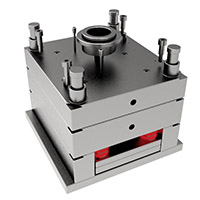Measures for Prevention and Control of Waste Gas Damage during Injection Molding Process and Identification of Poisoning Manifestations in Plastic Mold Factory
1、 Important measures for preventing and controlling exhaust gas damage during injection molding in plastic mold factories
1. Donglai Precision Mold Company and Plastic Mold Factory strictly control the injection molding process. Applying appropriate injection molding conditions according to the characteristics of raw materials and reducing unnecessary gas release is not only beneficial for injection molding production, but also for reducing gas damage.
2. Donglai Precision Mold Company and Plastic Mold Factory have separate injection molding workshops. Separate the injection molding process from other processes to avoid unnecessary gas pollution.
3. Donglai Precision Mold Company and Plastic Mold Factory have installed exhaust gas treatment systems. Ensure ventilation and breathability in the injection molding workshop, install an exhaust gas emission system, collect and guide the exhaust gas to the exhaust gas treatment pool for harmless treatment, and reduce the probability of injection molding personnel coming into contact with exhaust gas.
4. Donglai Precision Mold Company and Plastic Mold Factory undergo regular physical examinations. Injection molding operators should undergo regular physical examinations to determine whether all indicators are in a safe condition. If there are significant respiratory and cardiovascular system problems, or if it involves liver, kidney and other patient conditions, they should not engage in injection molding operations. They should be promptly changed positions and receive relevant treatment.
2、 General manifestation recognition of injection molding waste gas poisoning in Donglai Precision Mold Company and Plastic Mold Factory
Injection molding exhaust gas poisoning can be divided into two types: acute poisoning and slow poisoning:
Acute poisoning:
Short term absorption of toxic gases, such as acrylonitrile monomers, accompanied by symptoms of upper respiratory and eye effects. In severe cases, it may present with paroxysmal tetanic convulsions and coma in the limbs.
Slow poisoning:
Slow poisoning usually does not have significant symptoms, but long-term exposure to harmful gases can present with dizziness, fatigue, anxiety, and various debilitating symptoms such as excessive dreaming and unstable sleep.
